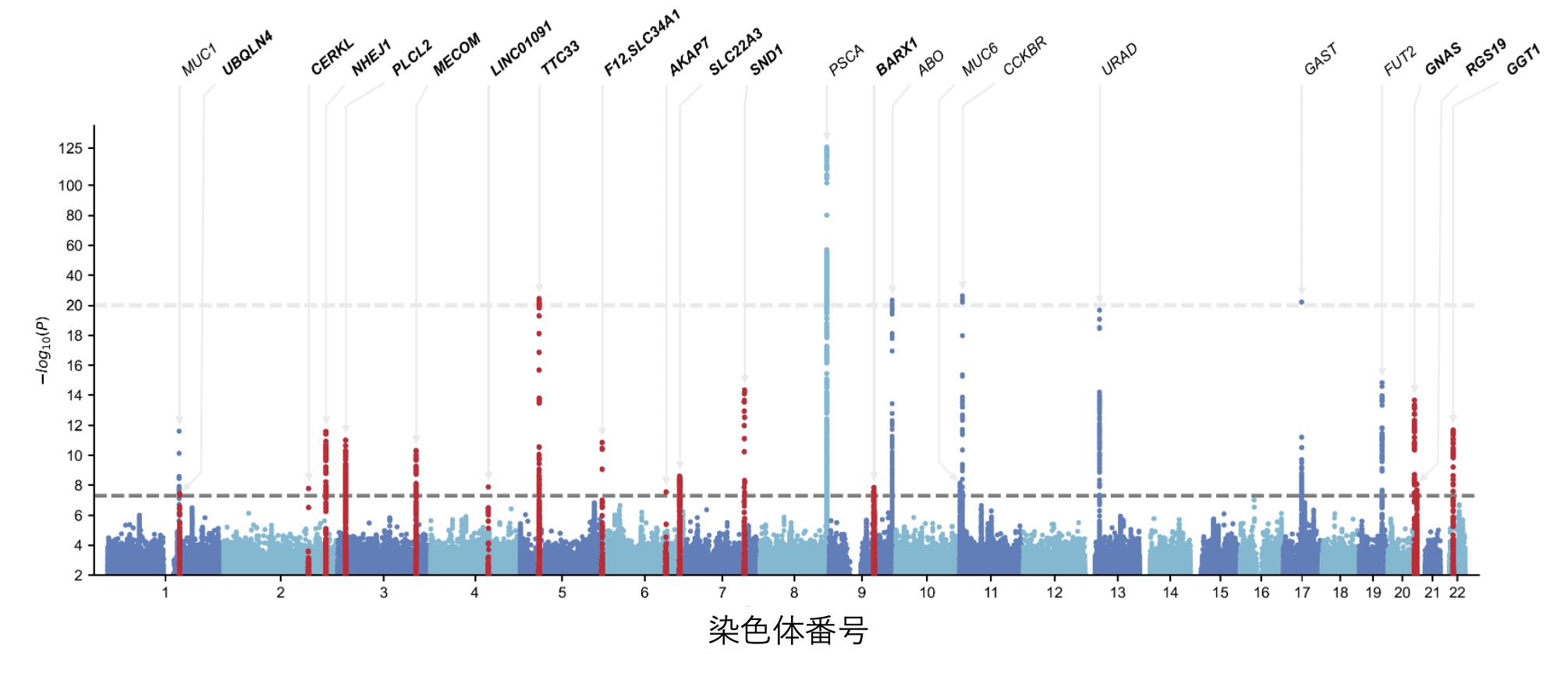2023-12-07 カリフォルニア大学バークレー校(UCB)
◆ホルムアルデヒドは体内で微量生成され、これが体内のエピジェネティック変化を調整するのに使用される可能性があります。過剰な場合、特定の遺伝子の発現を抑制する可能性があります。
◆従来の研究では、大量のホルムアルデヒドがDNAを無効にすることが示されていましたが、微量のホルムアルデヒドの毒性は説明されていませんでした。この研究は、ホルムアルデヒドが体内で発がん物質となる生化学的メカニズムを提供し、喫煙や大気汚染といったホルムアルデヒドの影響が生体内のホルムアルデヒド濃度を変え、これにより癌を再プログラムする可能性があることを示唆しています。
<関連情報>
- https://news.berkeley.edu/2023/12/07/formaldehyde-a-carcinogen-is-also-used-by-the-body-to-regulate-our-genes
- https://www.science.org/doi/10.1126/science.abp9201
ホルムアルデヒドはS-アデノシルメチオニンの生合成と一炭素代謝を調節する Formaldehyde regulates S-adenosylmethionine biosynthesis and one-carbon metabolism
Vanha N. Pham,Kevin J. Bruemmer,Joel D. W. Toh,Eva J. Ge,Logan Tenney,Carl C. Ward,Felix A. Dingler,Christopher L. Millington,Carlos A. Garcia-Prieto,Mia C. Pulos-Holmes,Nicholas T. Ingolia,Lucas B. Pontel,Manel Esteller,Ketan J. Patel,Daniel K. Nomura,and Christopher J. Chang
Science Published:3 Nov 2023
DOI:https://doi.org/10.1126/science.abp9201
Editor’s summary
Exposure to concentrated exogenous formaldehyde is toxic, but organisms also produce considerable amounts endogenously, so cells must have mechanisms to sense and respond to formaldehyde stress. Pham et al. used activity-based profiling of mouse liver cells to identify potential privileged sites in the proteome that react with formaldehyde and might be involved in sensing overload.The authors identified a cysteine within an isoform of S-adenosylmethionine (SAM) synthase (MAT1A), that is preferentially modified and inhibited by formaldehyde exposure. The downstream effect in a mouse model of chronic formaldehyde stress was a reduction in SAM levels and a perturbation of specific histone methylation sites, which in turn led to increased transcription and protein levels of MAT1A. —Michael A. Funk
Structured Abstract
INTRODUCTION
One-carbon metabolism manages cellular carbon pools by detoxifying highly reactive carbon species, such as aldehydes, and diverting their carbon toward the biosynthesis of useful products, including amino acids and nucleotides. Formaldehyde (FA) is a major one-carbon unit derived from exogenous environmental exposure and endogenous sources and is quickly scavenged in the cell through enzymatic oxidation to formate and carbon dioxide and/or metabolized through the folate cycle. S-adenosylmethionine (SAM) serves as the primary cellular methyl donor and harbors one-carbon units in a stable and accessible form. The ability to decipher the biochemical interplay between toxic reactive carbon species and stable physiological carbon units is essential for understanding fundamentals of one-carbon metabolism across all kingdoms of life. Especially important is understanding how aberrant carbon imbalances are connected to human diseases such as cancer, liver diseases, and asthma. Although the chronic exposure of toxic aldehydes is correlated to disease states, biological mechanisms of aldehyde signaling and their relation to carbon metabolism remain underexplored.
RATIONALE
Owing to its highly electrophilic nature, we hypothesized that FA could act as a one-carbon signal sensed by privileged cysteine sites across the proteome. FA reacts with cysteines on synthetic peptides, and we designed an unbiased, proteome-wide profiling study to systematically identify FA-sensitive cysteine residues. This work builds a biochemical framework for understanding global FA reactivity as a selective posttranslational modification of target proteins and downstream regulatory effects of such modifications.
RESULTS
Activity-based protein profiling identified FA modification of privileged cysteine sites across the proteome, including several enzymes responsible for FA metabolism, one-carbon metabolism, and amino acid biosynthesis. We focused on biochemical characterization of a key Cys120 residue on the SAM-generating enzyme S-adenosylmethionine synthase isoform type-1 (MAT1A) that is proximal to the MAT1A active site. FA exposure resulted in inhibition of MAT1A activity in an isoform-specific manner, which led to decreased SAM production. Cellular models containing only the MAT1A isoform displayed a reciprocal decrease in SAM levels with increasing doses of FA exposure. Moreover, an Adh5–/– mouse model of chronic FA elevation also showed SAM deficiency accompanied by lower levels of methylation on select histone methyl sinks. The chronic FA model also resulted in a decrease in methylation of the Mat1a promoter region, resulting in increased MAT1A expression as a compensatory mechanism to maintain available carbon units. We deciphered a compensatory biochemical feedback cycle where FA-dependent SAM deficiency led to an increase in MAT1A expression through genetic and epigenetic mechanisms regulated by FA-dependent transcription factors and DNA promoter hypomethylation, respectively.
CONCLUSION
In contrast to the traditional view of FA as an indiscriminate electrophile and toxic metabolite, we show that FA is sensed by specific cysteine sites in the proteome to regulate one-carbon metabolism feedback cycles through SAM biosynthesis. FA reacts with a key cysteine residue on MAT1A to inhibit its activity, resulting in SAM depletion and downstream changes in histone and DNA methylation. Under normal homeostatic conditions, FA is quickly sequestered into the folate cycle for conservation of one-carbon units to maintain balanced SAM biosynthesis. In response to FA overload, reciprocal SAM depletion through isoform-specific MAT1A inhibition results in changes to cellular methylation potential, epigenetic dysregulation, and perturbations in one-carbon metabolism, which in turns leads to compensatory up-regulation of MAT1A expression. This work provides a starting point for further exploration of aldehydes as signaling agents and the nexus between one-carbon metabolism and one-carbon signaling.
FA-dependent inhibition of SAM biosynthesis.
(A) ABPP identifies FA-sensitive cysteines such as MAT1A Cys120, in which FA modification inhibits S-adenosylmethionine synthase isoform type-1 (MAT1A) activity. (B) SAM deficiency lowers select histone methylation (Me) marks. (C) Adh5–/– mouse model of FA overload displays epigenetic alterations. (D) Inhibition of MAT1A activity by FA decreases SAM levels, which in turn promotes a one-carbon feedback cycle by compensatory increases in MAT1A expression. [Figure created using BioRender]
Abstract
One-carbon metabolism is an essential branch of cellular metabolism that intersects with epigenetic regulation. In this work, we show how formaldehyde (FA), a one-carbon unit derived from both endogenous sources and environmental exposure, regulates one-carbon metabolism by inhibiting the biosynthesis of S-adenosylmethionine (SAM), the major methyl donor in cells. FA reacts with privileged, hyperreactive cysteine sites in the proteome, including Cys120 in S-adenosylmethionine synthase isoform type-1 (MAT1A). FA exposure inhibited MAT1A activity and decreased SAM production with MAT-isoform specificity. A genetic mouse model of chronic FA overload showed a decrease n SAM and in methylation on selected histones and genes. Epigenetic and transcriptional regulation of Mat1a and related genes function as compensatory mechanisms for FA-dependent SAM depletion, revealing a biochemical feedback cycle between FA and SAM one-carbon units.



